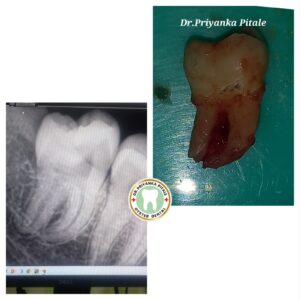
Wisdom Tooth Extraction
Wisdom tooth extraction is a common dental procedure performed to remove one or more of the third molars, commonly known as wisdom teeth. These teeth are the last to emerge, usually appearing between the ages of 17 and 25. Due to their position at the back of the mouth, wisdom teeth often pose challenges and complications that necessitate their removal.
Wisdom teeth can be very tricky in terms of their location and anatomy, unlike all the other teeth in the arch, but fear not! At Oyster Dental, we make the procedure a breeze, ensuring your comfort and well-being at each step. The planning of wisdom tooth removal could need some time and assessment, but once planned, the procedure is smooth.
Following the instructions closely ensures your speedy recovery.
When it comes to wisdom teeth extractions, it’s all smiles at Oyster Dental.
Why Wisdom Teeth Are Extracted
Several reasons can lead to the extraction of wisdom teeth:
1. Impaction: Wisdom teeth often grow at an angle or fail to fully emerge from the gum line and bone, a condition known as impaction. Impacted teeth can cause pain, swelling, and infection. They may also damage adjacent teeth and their roots.
2. Overcrowding: The human jaw has evolved to be smaller than that of our ancestors, often lacking sufficient space to accommodate an extra set of molars. This overcrowding can lead to misalignment of other teeth and impact orthodontic treatment results.
3. Decay and Gum Disease: Due to their location, wisdom teeth are harder to clean, making them more susceptible to cavities and gum disease. If left untreated, infections from these teeth can spread to other areas of the mouth.
4. Cysts and Tumors: In rare cases, impacted wisdom teeth can form cysts or tumors, which can damage the jawbone and surrounding structures.
The Extraction Procedure
The procedure for wisdom tooth extraction varies depending on the complexity of the case. Here is a general outline:
1. Consultation and Examination: The process begins with a consultation with the dentist or oral surgeon. X-rays are taken to assess the position of the wisdom teeth, adjacent structures such as the nerve course, maxillary sinuses, and nasal floor, and determine the best course of action. At times, CBCT scans are also suggested to assess the proximity of surrounding structures.
2. Premedication: Premedication is recommended before minor surgical intervention to minimize anxiety, the possibility of pain, & to control the infection, to facilitate the procedure & increase your comfort.
3. Anesthesia: On the day of the extraction, local anesthesia is administered to numb the area around the wisdom teeth. In some cases, sedation or general anesthesia may be used, especially for more complicated extractions or anxious patients.
4. Extraction: For a simple extraction, the dentist uses an elevator to loosen the tooth and forceps to remove it. For impacted teeth, an incision is made in the gum to expose the tooth. Sometimes, the tooth is sectioned into smaller pieces to facilitate removal.
5. Post-Extraction Care: After the extraction sutures are given, gauze is placed over the extraction site to control bleeding. The dentist provides instructions for postoperative care, including managing pain, swelling, and maintaining oral hygiene. Patients are advised to avoid smoking & sheesha, vigorous rinsing, and consuming hard foods, carbonated drinks, & sour drinks to ensure proper healing.
Recovery and Considerations
Recovery from wisdom tooth extraction typically takes a few days to a week. Swelling and discomfort are common but can be managed with prescribed pain medications and ice packs. It is crucial to follow the dentist’s aftercare instructions to prevent complications such as dry socket, a painful condition where the blood clot at the extraction site dislodges prematurely.
In conclusion, wisdom tooth extraction is a routine procedure aimed at preventing or addressing oral health issues caused by these problematic molars. With advancements in dental techniques and anesthesia, the procedure has become more comfortable and efficient, ensuring better outcomes for patients. Proper care and adherence to post-operative instructions are essential for a smooth recovery and maintaining optimal oral health.